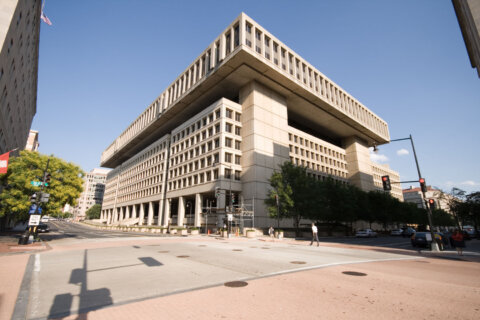WASHINGTON — Two buildings on Georgetown’s campus were renamed Tuesday in an effort to acknowledge the university’s history of slavery.
Flanked by faculty, students and descendants of the 272 enslaved people sold by the Maryland Province of Jesuits to Louisiana plantation owners in 1828, the university’s president, John J. DeGioia, rededicated two campus halls.
Sitting in the heart of Georgetown’s campus, the buildings now bear the names of a slave sold for the university’s benefit and a free woman known for opening the first school for black girls.
“Behind me is Isaac Hawkins Hall, which we are here to dedicate this afternoon along with Anne Marie Becraft Hall, the oldest building on our campus — just a short walk from here,” DeGioia said.
Karen Harper Royal — a descendant of Hawkins who sat on the University Working Group on Slavery, Memory, and Reconciliation along with students and faculty — spoke to the day’s historic significance.
“Naming these buildings for Isaac Hawkins and Anne Marie Becraft is the beginning of our journey together towards a healing from the Jesuits of Georgetown’s legacy of slavery,” Harper Royal said.
Becraft founded a school for black girls on Dumbarton Street in the town of Georgetown in the 1820s. She started her teaching career at age 15 and eventually became one of the country’s first black nuns, according to the university.
“She was a devout Catholic and deeply committed to educating young girls of color in the nation’s capital. Though she experienced both anti-Catholic and anti-black intimidation, she nevertheless responded to her calling to teach and to serve God,” said Marcia Chatelain, an associate professor of history and African-American studies and a member of the working group, on the university website.
Descendants and family, faculty and students raised their voices and applauded when both buildings were dedicated in a ceremony dappled with sunlight in front of Isaac Hawkins Hall.
“It was students from Georgetown University that led Georgetown to recognize more needed to be done than simply acknowledging their history with slavery,” Harper Royal said.
Isaac Hawkins was chosen by the working group to represent the group of 272 slaves because his name was listed first in the Articles of Agreement drafted for the deal, according to the university. The building was once called Mulledy Hall, named for Rev. Thomas Mulledy, S.J., who brokered the deal to sell Hawkins and the others. It was temporarily renamed Freedom Hall in December 2015.
Becraft’s name replaces that of Rev. William McSherry, who helped with the 1838 sale of the slaves. That hall was temporarily renamed Remembrance Hall in 2015 until the working group made its final choice.
“This is a moment for all of us to more deeply understand our history, informed and shaped by our past, and informed and shaped by our values we seek to uphold,” DeGioia said at the ceremony.








